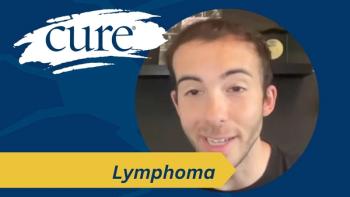
A New Way to Fight Triple-Negative Breast Cancer Arrives
Even as chemotherapy, surgery and radiation remain treatment mainstays, immunotherapy is ready to take the stage.
Despite accounting for approximately 10% to 15% of breast cancers, triple-negative breast cancer (TNBC) has fewer treatment options compared with other types of invasive breast cancer.
However, there is good news with the advent of immunotherapy in the TNBC armamentarium.
“I think (immunotherapy is) something to look forward to in the future. Something more specific, more targeted, that will actually treat the cancer more effectively and also things that are less aggressive and less toxic,” said Dr. Ogori Kalu, a surgeon at Saint Michael’s Medical Center in Newark, New Jersey.
As part of its “Speaking Out” video series, CURE® spoke with Kalu, who is a board member of the Triple Negative Breast Cancer Foundation, about current standards of care for the disease, why the multidisciplinary approach to care is key and how immunotherapy will play a role in the future.
CURE®: How does stage affect the type of treatment a patient will receive for triple-negative breast cancer?
Kalu: For triple-negative breast cancer, irrespective of the stage at diagnosis, one thing is for sure is that the woman is going to receive chemotherapy or that chemotherapy will be recommended for that patient. But then, outside of chemotherapy, the stage (of the disease) would determine what kind of surgery (she) would have, plus or minus radiation. So, the lower or the earlier the stage — stage 1 and maybe stage 2 — (the more likely it is) the patient could have breast-conserving therapy where they just take out the tumor, and then (the patient) would need radiation. (Compare this with) women who (receive a recommendation) to have their entire breasts removed, which is a mastectomy, plus or minus reconstruction. And then radiation might be an option, as well. So, they (all) would need chemotherapy (for early-stage disease). (There) are different options for surgery, depending on what stage (is) diagnosed. And then radiation is added, depending on what kind of surgery they have and whether they have more advanced disease.
You just went over some options for early-stage triple-negative breast cancer. What are the current standards of care for advanced disease?
For this disease, the standard of care is typically to start off with chemotherapy for a woman with advanced disease, which I would (say is) stage 2 onward. Usually, chemotherapy is recommended up front. Chemotherapy allows the clinician to have an idea of how well the tumor responds to the chemotherapeutic treatment; to get a better idea of (the patient’s) overall prognosis, given what is made available to them at the time for treatment; and to determine what further treatment, meaning surgery or radiation, would be needed after the initial chemotherapy.
Are there different standards of care for recurrent disease?
There’s no difference in the standard of care, I believe, if there’s just a difference in the kind of way the cancer presents itself in the patient. Once a woman has had breast cancer, initially a triple-negative disease, and has been treated, once it comes back or presents itself in a metastatic setting, then there’s a host of different options. A medical oncologist knows how to treat that patient, and that all depends on how the patient responded initially to her initial medical treatment and what kind of tumor that she has, which would correspond to which medications that the oncologist will think is appropriate this second round to effectively treat the patient.
With so many treatment options, why is the multidisciplinary approach in triple-negative breast cancer treatment important?
The multidisciplinary approach typically includes the medical oncologist, radiation oncologist, internist, dietitian, social worker, plastic reconstructive surgeon and a patient navigator/care coordinator. (It is important that) all of these people in the woman’s treatment plan (be) on the same page of what the patient needs at the time and how to coordinate (her care) in a timely fashion so that there are no gaps in treatment. Multidisciplinary approaches are also beneficial because you have different perspectives on the best way to treat this patient’s cancer. You know, not everyone is the same. We can’t have cookie-cutter treatment plans for everyone, because different things are going on in a woman’s life that could either interfere with what you think is best or need to be taken into consideration for the different treatment plans that you’re recommending. It’s very important to have different perspectives to get the best treatment option for the patient because she would know what’s best and what would work best for her.
What are some of the exciting treatments that are in the pipeline?
The most exciting treatments out there for triple-negative breast cancer are what we call immunotherapies, which are more targeted therapies toward triple-negative disease. This is part of what’s going on in the pipeline and going through clinical trials right now, but they seem to all have a common denominator, which is what we call immunotherapy targets that would be specific for these cancer cells. And I think that’s the most exciting thing that we are looking forward to seeing come into mainstream for treatment.
What do you think patients with triple-negative breast cancer have to look forward to when it comes to the treatment landscape?
I think they (will) have more options made available to them, which are also less-toxic options, because we know that what we’re giving now, for some women, is very hard to tolerate. I think that’s something to look forward to in the future, something more specific, more targeted, that will actually treat the cancer more effectively, and also things that are less aggressive and less toxic. I’m very hopeful that we will see these treatment options become readily available in the near future.
For more news on cancer updates, research and education, don’t forget to




